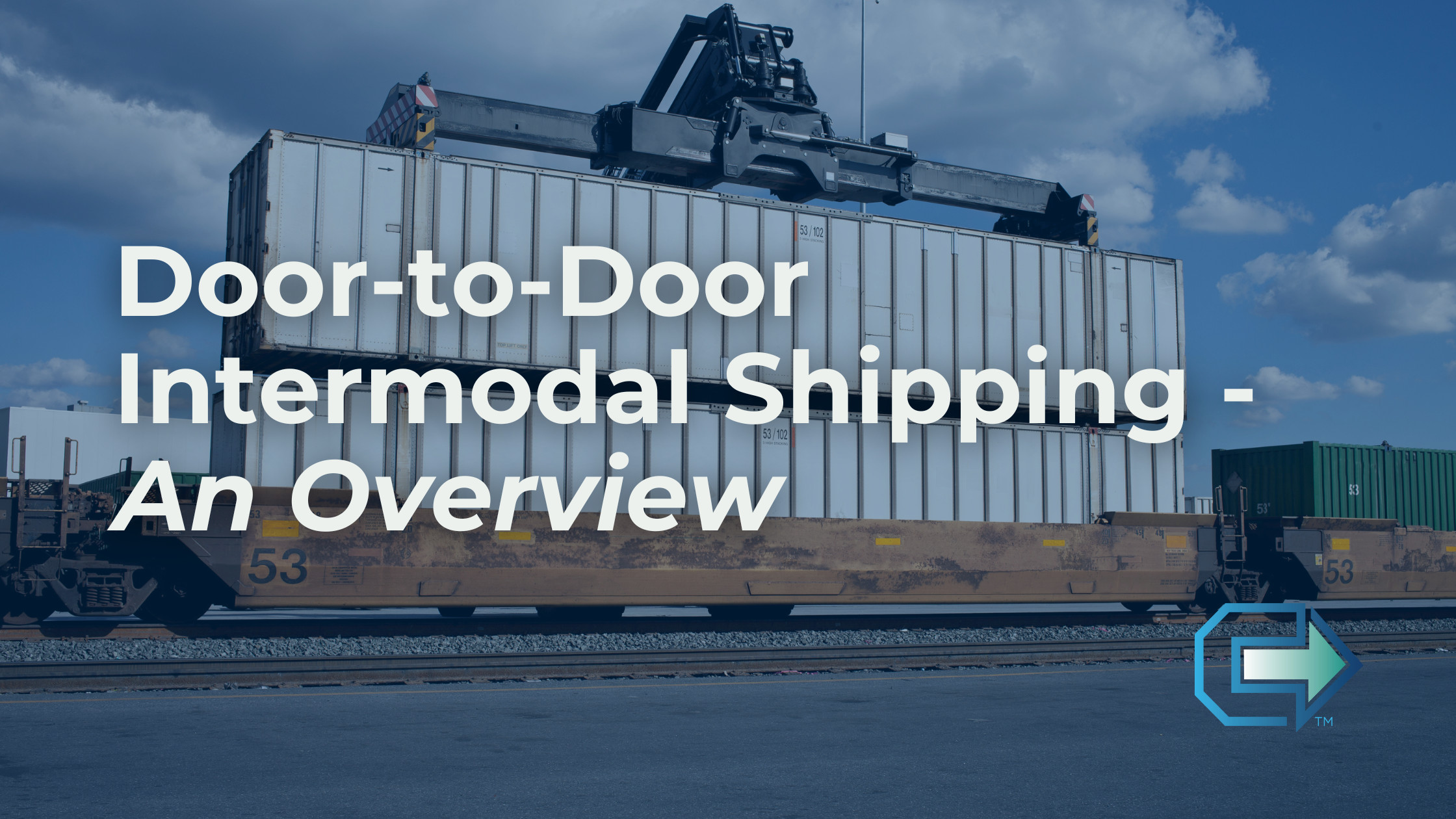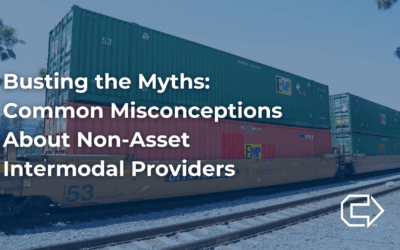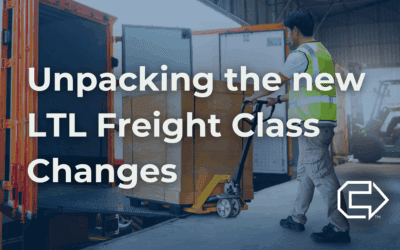Shippers are constantly on the lookout for smarter, more cost-effective ways to move freight. One solution gaining significant traction is door-to-door intermodal shipping — a hybrid transportation method that blends the reliability of rail with the flexibility of trucking.
While the term “intermodal” gets tossed around a lot, many shippers still have questions about how the door-to-door model works and whether it’s the right fit for their freight needs.
What Is Door-to-Door Intermodal?
Door-to-door intermodal shipping refers to the full movement of goods from the shipper’s facility to the recipient’s location using a coordinated combination of truck and rail. The key benefit? Your pickup and drop-off points don’t need direct rail access — local drayage trucks handle the first and final legs, connecting your facility to the rail network and back again.
This model leverages the cost savings of rail for the long-haul portion of a shipment, while using trucks for short-distance pickups and deliveries, offering a seamless, full-service solution for shippers.
It’s especially valuable for those looking to balance budget constraints with sustainability goals, as rail transport emits significantly fewer greenhouse gases per ton-mile than over-the-road trucks.
How It Works: A Simple Overview
Door-to-door intermodal shipping typically involves three stages:
1. Initial Pickup (Drayage Truck)
The journey begins with a truck collecting the freight at the shipper’s location and delivering it to the nearest intermodal terminal.
2. Rail Transportation
The container is loaded onto a train and moved across long distances via the rail network. This step covers the majority of the journey and delivers the biggest cost and environmental savings.
3. Final Delivery (Drayage Truck)
Once the train reaches a destination rail terminal near the receiver, another truck takes over and delivers the freight to its final location.
Example: A shipment moving from Dallas to Seattle may begin with a truck transporting the load to a Dallas rail ramp, followed by a rail journey to Seattle, and finally a truck delivery to the receiver’s door.
Top Advantages of Door-to-Door Intermodal Shipping
1. Lower Costs
Rail offers excellent economies of scale over long distances, making this mode ideal for shipments traveling more than 700 miles. By reducing dependency on high-cost long-haul trucking, shippers often see meaningful savings.
2. Eco-Friendly Performance
Intermodal significantly reduces the environmental impact of freight movement. Fewer emissions and greater fuel efficiency make it a great option for companies with green initiatives or ESG targets.
3. End-to-End Reliability
Thanks to consistent rail schedules and advanced shipment tracking technology, intermodal offers reliable transit times and visibility throughout the journey, key advantages for supply chain planning.
4. Broad Reach and Flexibility
With intermodal, freight can reach almost any U.S. destination — even those far from a rail line — thanks to dray trucks covering the “first and final mile.”
Intermodal vs. Other Shipping Methods
How does door-to-door intermodal compare to alternatives?
Versus Truckload (TL): Intermodal is typically more affordable for long-distance shipping but may run a bit slower — generally about a day behind full truckload.
Versus Hub-to-Hub Intermodal: Unlike hub-based models where the shipper or receiver arranges the drayage, door-to-door intermodal includes all legs of the trip. It’s a managed solution that minimizes coordination and gives shippers a truckload-like experience.
Who Benefits Most from Door-to-Door Intermodal?
This solution is especially well-suited for:
High-volume, long-haul shipments over 700 miles
Industries like retail, manufacturing, and electronics, where cost and delivery consistency matter
Sustainability-focused companies aiming to reduce emissions
Shippers looking to diversify transport options and reduce reliance on truckload carriers
Starting with Door-to-Door Intermodal: Key Tips
Partner with an Experienced Intermodal Marketing Company (IMC): Not all providers are the same. A strong IMC will coordinate everything — from drayage to rail — ensuring a smooth process.
Account for Rail Timing: Intermodal may not be as fast as direct trucking, but with proper scheduling, it’s highly dependable. Your IMC will align pickup windows with rail departures to keep things on track.
Common Misunderstandings
Let’s clear up some myths:
“It takes too long.” For long distances, the timing is comparable to truckload, especially when planned well.
“Only big businesses can use intermodal.” Not true — small and mid-sized companies also benefit from door-to-door service.
“It’s hard to manage.” With Cornerstone, the process is simple and fully managed on your behalf.
“Damage is more likely.” Proper loading practices — often with railroad support — greatly reduce the risk of freight damage.
“It’s hard to load containers.” With minimal adjustments like staggered pallets or simple blocking/bracing, most shipments load with ease.
“Extra charges eat up savings.” A quality IMC will prevent surprise fees through transparent pricing and strong carrier relationships.
Final Thoughts
Door-to-door intermodal offers a compelling balance of affordability, sustainability, and geographic reach. For shippers seeking alternatives to long-haul trucking, it’s an efficient and forward-thinking choice.
Interested in exploring whether intermodal could improve your logistics operations? Reach out to our team for a tailored consultation.






